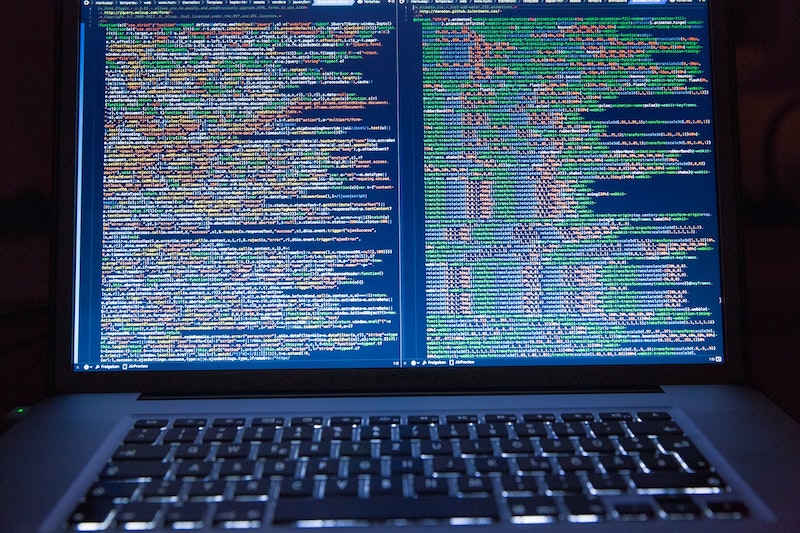Shrouded in intrigue and mystery, it’s no surprise the dark web is alluring to kids. Here are 8 things parents can do to protect their children from the dark web.
Remember how as a toddler, the only things your child would get into were the things you didn’t want them to? As they grow up, they start to understand words and eventually (some) logic. Yet, telling them not to do something, be someone’s friend or go somewhere, would still be taken as an invitation to do that very thing.
“Talking to young people about the dark web is a double-edged sword,” admits Claire Orange, a child therapist and CEO of DiGii Social, a program that teaches children to be safe online.
“On one hand, we want to educate our children, and to guide and help them navigate through some of the trickier aspects of growing up by having open conversations and allowing exploration. But then that openness potentially opens some doors that pose challenges and risks.”
What Claire means is that often, the more parents forbid children to do something, the more alluring it is. The dark web could be one of those things. It’s somewhere that can expose them to some serious crimes. Yet, the mere act of talking to them about it can cause them to want to visit the dark web.
What do we know about the dark web and how do we keep our children safe from it? We have a cyber security expert reveal 8 things even non-tech savvy parents can do to find out what their children are doing online.
What is the dark web?
The dark web (or dark net) consists of hidden websites that are encrypted and impossible to find simply by searching on Google.
In the video below, cyber security expert Lawrence Patrick from Zirilio explains the difference between the web, the deep web and the dark web.
He also offers tips every parent should know when it comes to monitoring their child’s online activities.
“If you’ve ever visited a huge city and decided to take a tour of some of the rougher, more unsavoury areas by night, where anything you want is on offer (yes, anything) and everything feels a bit edgy and dangerous, then that is similar to trawling through the dark web,” says Claire. “Obviously, not everything is horrifying and dangerous, but a significant amount of what’s listed is.”
The main feature of the dark web is its ability to conceal traffic and identity. This means any activity performed on the dark web is anonymous. This makes it highly attractive to criminals, who can conduct illegal transactions while protecting their identity. Think drug deals, weapons, political information, child porn, and other disturbing and illegal goods and services.
As Stephen Kho, cyber security expert from Avast warns, the dark web is “a riskier place to hang out than the surface web as a lack of regulation by authorities makes it a playground for cyber criminals and scammers”.
Talking to children about the dark web
Lawrence has a very simple four-step formula when it comes to talking to children about the dark web. It’s one underpinned by the very simple premise of having honest conversations with our kids:
- Acknowledge their curiosity
- Normalise their curiosity (they don’t have be secretive about it)
- Offer to find the answers together
- Give them the reason/s why they shouldn’t search for the answer themselves
Practically, he suggests the conversation could go something like this:
“I know you’re curious. You’re supposed to be curious. Come to me first with your questions. We can research and learn together. The worst thing is for you to search for answers online as some answers are harmful to see. You may see an image you’ll never be able to erase from your brain. As parents, we can’t help or defend you after you’ve seen it.
“You’ll need to make the level of detail age-appropriate,” Lawrence adds. “And have the conversation regularly.”
When talking to children about the dark web, remember that children are naturally curious. Add to that feature films that glorify hackers and cyber-criminal activities, and you’re in a highly perilous situation of fuelling a child’s curiosity if you simply tell them not to visit it.
“The life formula that children throughout the ages seem to apply to the growing up years is to follow curiosity into the darkest corners and to most definitely explore anything that seems to cause a parent to want to explode,” warns Claire. “Drugs, alcohol, sex—just ask any teen about the thrill of defying a parent’s emphatic ‘No!’ and apply that to then talking about, and banning, exploration of the dark web.
“A big part of parenting is to be the responsible decision-maker for our children while they’re learning how to do that for themselves,” Claire continues. “And that in turn means protecting them from themselves and their curiosity when it comes to the risk of exposure to content that can psychologically and emotionally damage them. Applying parent controls and engaging a young person in open discussion about the risks of over-exposure is an essential part of twenty-first century parenting.”
How to get on the dark web

Getting on the dark web requires specific programs, tools and browsers. It should come as some form of relief for parents to know that nobody can simply stumble on to the dark web.
However, as Stephen warns, “Although the dark net is a difficult place to gain access to, kids should always be monitored while online.”
According to Lawrence, there are four things parents can do in general to protect their children online:
1. Browser history
Looking at their browser history gives you an idea of what websites they’ve visited. You can search for specific terms within the browser history too. Bear in mind most children know about this parental trick and may use their browser’s incognito mode or private windows to cover their tracks. Lawrence encourages parents to still look at the browser history because “it’s important for them to know there will be accountability”.
2. Personal profile
Create a profile for your child on your computer and have them log in as such. When they do so, it will give you a nicely packaged history of what they’ve done on the computer.
3. Third party tools
There are many third party tools that offer online parental controls and provide you with more visibility into website domains.
4. VPN use
If you’re using a VPN, Lawrence advises caution. “Change the way you’re using it. If they’re smart enough to use a VPN, this is the way they can evade the tools,” he says.
How do I know if my child is on the dark web?
If you’re worried your child is already accessing the dark web, Lawrence suggests a few things:
1. Look at the software and programs installed on their machine
On top of that, you can also look for their most frequently used programs to give you an idea of where they’re spending most of their time on the computer. Look at the most frequently used programs. Programs to look out for related to the dark web include:
- TOR (The Onion Router): Official name for the dark web, The Tor Network, Tor browser
- Whonix
- Tails
2. Watch out for Installers for an operating system like Linux
If you do, it could mean they’re trying to create a portable boot disk to quickly boot the computer into a separate operating system. You will have no visibility over this because the operating system lives on a thumbdrive. If they’re using a thumbdrive on a computer all the time, you should also ask questions.
3. Scrutinise specific web browsers
These are browsers with great privacy features, which means your child could be using them for legitimate reasons. However, be mindful that they can also use the TOR network right from the browser.
- Brave web browser
- Opera web browser
4. Understand cryptocurrency usage
Cryptocurrency is the preferred way to transact on the dark web. If your child has a crypto wallet, understand the transactions and have visibility over what they do with it.
Download a free screen time plan printable
How helpful was this article?
Click on a star to rate it!
0 / 5. 0
Be the first to rate this post!
Melody Tan
Related posts
Subscribe
Receive personalised articles from experts and wellness inspiration weekly!

